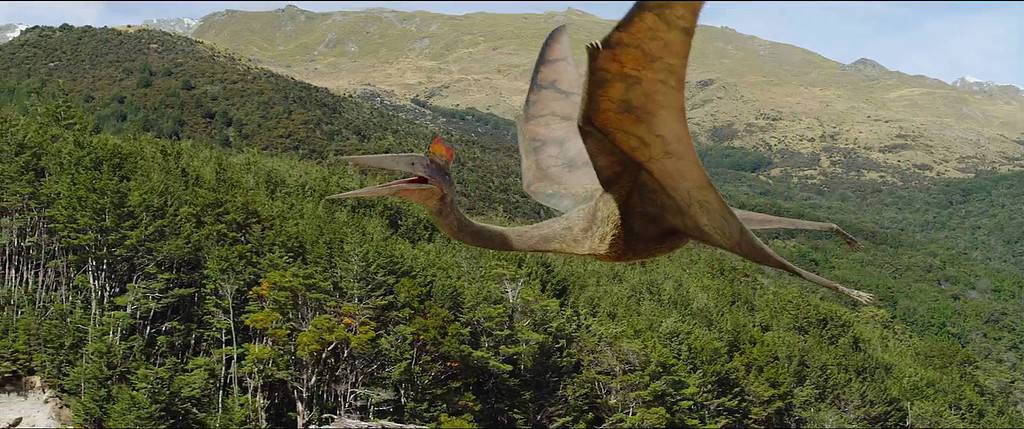Quetzalcoatlus is a genus of azhdarchid pterosaur from the Late Cretaceous North America. This genus is known to be one of the largest flying animals ever discovered. Its discovery in the 1970s challenged our understanding of flight in prehistoric times. This article explores the discovery, physical attributes, and ecological role of Quetzalcoatlus, shedding light on its paleontological impact.

Discovery and Naming
Quetzalcoatlus‘ journey of discovery began in 1971 when Douglas A. Lawson, a geology graduate student from the University of Texas, discovered the first fossils in Texas’s Big Bend National Park. This initial find, a partial wing, laid the groundwork for what would become a groundbreaking discovery in paleontology. The fossil dated to around 68 million years ago hinted at an immense creature with a 10-meter wingspan.
Lawson uncovered additional fossils, including three fragmentary skeletons of smaller individuals. These findings led to the first description of Quetzalcoatlus northropi, the first known speciecs. The genus name pays homage to the Aztec god Quetzalcoatl, the patron god of the Aztec priesthood. The species name, northropi, honors John Knudsen Northrop, a pioneer in aviation whose designs mimicked the pterosaur’s form.


For years, the smaller specimens that Lawson unearthed were considered juveniles of the same species. However, the discovery of more complete remains, including skulls, revealed these were, in fact, distinct species. In 2021, another species was named Q. lawsoni after Lawson himself.
Physical Description
Quetzalcoatlus is known as the largest flying animal ever discovered. The type species, Q. northropi, is renowned for its gigantic wingspan, estimated around 10 to 11 meters. This vast wingspan was complemented by a height of at least 5.5 meters when grounded. In contrast, Q. lawsoni, the smaller species, boasted a more modest wingspan of around 6 meters. Both shared the azhdarchid pterosaur distinctive features: a long neck and a head crowned with a sharp, pointed beak.


Body mass estimates for Quetzalcoatlus have varied widely, reflecting the challenges in figuring out the weight of such a bizarre creature. For Q. northropi, estimates have ranged from as low as 70 kilograms up to 250 kilograms, depending on the calculation method. Meanwhile, Q. lawsoni, with its smaller stature, was estimated to weigh around 20 kilograms for individuals with a wingspan of 4.5 meters.
The skull of Quetzalcoatlus features a long beak, which is sharp and pointed, which is especially obvious in Q. lawsoni. This contradicted earlier reconstructions that suggested a blunter snout. Paleontologists also infer the presence of a skull crest, though its exact shape and size remain subjects of ongoing research.
Paleoecology and Lifestyle
Quetzalcoatlus thrived in the ecosystems of Late Cretaceous North America. Its fossils, primarily discovered in modern-day Texas, suggest a habitat of semi-arid inland plains. The notable dinosaurs coexisting with Quetzalcoatlus were Alamosaurus, Tyrannosaurus, Ankylosaurus, and Triceratops. Pterosaurs such as Wellnhopterus also cohabited these plains, indicating a complex aerial ecosystem with multiple niche adaptations.
The diet and feeding behavior of Quetzalcoatlus have been subjects of debate among paleontologists. Initially, Quetzalcoatlus was thought to scavenge or hunt terrestrial prey due to the absence of large bodies of water in the region where its fossils were found. This theory suggested a lifestyle of feeding on small animals or carrion.


However, further studies have challenged this view, proposing alternative feeding strategies. For instance, some researchers have speculated that, like modern skimmers, Quetzalcoatlus could have fed on fish by flying low over bodies of water, using its long beak to catch prey. Yet, this hypothesis faces criticism due to the anatomical and metabolic challenges associated with such a feeding method for a creature of its size.
More recent analyses lean towards a terrestrial stalker model, where Quetzalcoatlus would use its height and long neck to survey the ground for small vertebrates and invertebrates. This theory aligns with the known distribution of azhdarchid fossils in inland areas, suggesting these pterosaurs were adept at walking and foraging on land, much like modern herons or storks.
Despite its massive size, studies suggest that Quetzalcoatlus was capable of efficient long-distance flight. This ability would have allowed it to exploit a wide range of habitats, from inland plains to coastlines, enhancing its ecological flexibility.
Flight Mechanics
The flight of Quetzalcoatlus, given its colossal size, has long intrigued scientists. Its wingspan, exceeding 10 meters for Q. northropi, pushes the boundaries of what was thought possible for powered flight in vertebrates. Early theories suggested that such a massive creature could only have been a glider, catching thermal updrafts to stay airborne. However, further research into the structure of its wings and body mass estimates suggests Quetzalcoatlus was highly adapted for flight. The genus featured a relatively lightweight structure and a large surface area that would have facilitated both lift and control.


Computer modeling and comparisons with modern animals indicate that Quetzalcoatlus likely employed a combination of flapping and soaring flight. Its strong physique suggests it could launch itself into the air with a powerful leap. Once airborne, it would have been capable of sustained flapping flight over short distances, transitioning to thermal soaring for long-distance travel.
This flight strategy would have allowed Quetzalcoatlus to exploit a variety of ecological niches, ranging from scavenging on the ground to hunting in the air or over water. Its ability to cover vast distances could also explain the widespread distribution of azhdarchid fossils across different continents.
Quetzalcoatlus in Popular Culture
Quetzalcoatlus is one of the most famous pterosaurs, being heavily featured in popular culture. In the Apple+ series “Prehistoric Planet” Quetzalcoatlus is featured in several episodes, even fighting off an adult Tyrannosaurus over a carcass. The series showcases the flying reptile alongside Hatzegopteryx.


“Walking with Dinosaurs” (BBC, 1999) features Quetzalcoatlus in the episode titled “Death of a Dynasty”. The animal is scavenging for food among the last dinosaurs before the mass extinction event.
The IMAX film “Flying Monsters 3D”, narrated by Sir David Attenborough, features Quetzalcoatlus among other prehistoric flying reptiles. It delves into the aerodynamics and physics of how such massive creatures could have taken to the skies.
“ARK: Survival Evolved,” a popular video game, includes Quetzalcoatlus as a tamable and rideable creature. The game’s representation of the genus combines fantasy with elements of scientific speculation.
Interestingly, Quetzalcoatlus was even considered in a 1985 project by the US Defense Advanced Research Projects Agency (DARPA) and AeroVironment. The project produced a half-scale model of Quetzalcoatlus, aimed at exploring the feasibility of ornithopter unmanned aerial vehicles (UAVs).
Thanks for your feedback!

